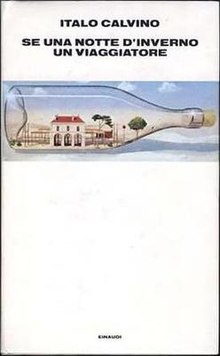This is kind of a weird idea; in elementary and middle school English, most of us were taught that the theme was a sort of "lesson" (later replaced by "observation") about human nature or the world around us. But when I started thinking about it, I realized that perhaps this view had always skewed my thematic interpretations. Take, for example, the science fiction genre.
Most science fiction begins as an attempt to construct marginally-possible visions of the future, whether dystopian or not, often involving space travel, robots, and the like. A notable number of these visions approximate the truth of the future; for instance, 'cyberspace' is a term which originated in William Gibson's fiction, interplanetary travel is about a decade away (caveat emptor), and robots have been developed quite significantly.
Additionally, while it may seem that sci-fi novels intend to present a survey of technological benefits or, alternatively, a horrifyingly-dystopian world, and thus attempt to influence the reader to support or oppose technological development, perhaps their themes are closer to simply predicting the future as the author sees it, and leaving readers to judge that future for themselves.
With that in mind, consider the following quote from a Paris Review interview with William Gibson in which he describes potential "plot drivers" of sci-fi novels in the 1980s:
"Fossil fuels have been discovered to be destabilizing the planet’s climate, with
possibly drastic consequences. There’s an epidemic, highly contagious, lethal
sexual disease that destroys the human immune system, raging virtually uncontrolled
throughout much of Africa. New York has been attacked by Islamist fundamentalists,
who have destroyed the two tallest buildings in the city, and the United States in
response has invaded Afghanistan and Iraq."
When we consider these ideas through the lens of the world in 1981, they seem outlandish and unrealistic-- but here we are, in 2013. The same kind of perspective can be seen with essentially all technology that we take for granted today.
In the same vein.
As a second example, imagine that you are reading a hypothetical science fiction novel describing a world in which machine augmentation (everything from artificial arms to minds hosted in computers) has become commonplace. In fact, suppose that in this novel, characters express distaste at the idea of being fully human, and that the closer to a pure machine someone gets, the higher their sociopolitical (and perceived moral) status is. Other than these details, the novel is a simple adventure story, perhaps with a vague ending or something of that nature.
I would expect three "classes" of reader reactions:
1. The premise seems ridiculous to this kind of reader, and the story seems uninteresting.
2. This type of reader interprets the story as a cautionary tale rooted in the ethics of keeping humans separate from machines, and reacts negatively to the premise.
3. This type of reader approves of the basic premise, if not of the idea that humanity is something to be rejected; to this reader, the story constructs a plausible (and somewhat awesome) view of the future.
I fall into the third class of reader; I'd gladly trade in my arm for a mechanical one. (Provided that I saw the specs first, anyway.)
It seems that these basic subtypes of readers can be found with regard to any type of futurist fiction. There are those who aren't all that into the genre (or, at least, that particular section of the genre), those who like the way the world is now or have ethical doubts, and those who wholeheartedly support technological development regardless of concerns.
So, after this oblong tangent, I will return to my initial point. Let's consider the themes that each type of reader will retrieve from this story. I'd venture that reader type 1 would not glean much in the way of a theme from the story; to them, it would not be very meaningful. Reader type 2 would carry away the theme that technology can be dangerous to the structure and fundamental ideas of our society, and reader type 3 would say that the story demonstrates the enormous potential of technology, and that (citing mentioned circumstances such as the total disappearance of disability and crippling injury) technology will tend to improve the quality of life.
However, I think that these themes are produced more from the reader than from the author. The story itself is close to neutral, or, at the very least, closer to neutral than its interpretations are; in this hypothetical, the author has no intent to persuade readers one way or another. Still, readers pull meaning from the setting of the story and their own personal views.
Though of course there is essentially a consensus on the themes and intentions of some fictional works (e.g. 1984), I think that many modern works of literature, especially in science fiction, tend to be interpreted in different ways than the author intended, and that we should exercise caution in interpretation. After all, perhaps we can learn more about the work-- and about our own beliefs-- if we stop for a moment to play Devil's Advocate and look at the story from other points of view.





